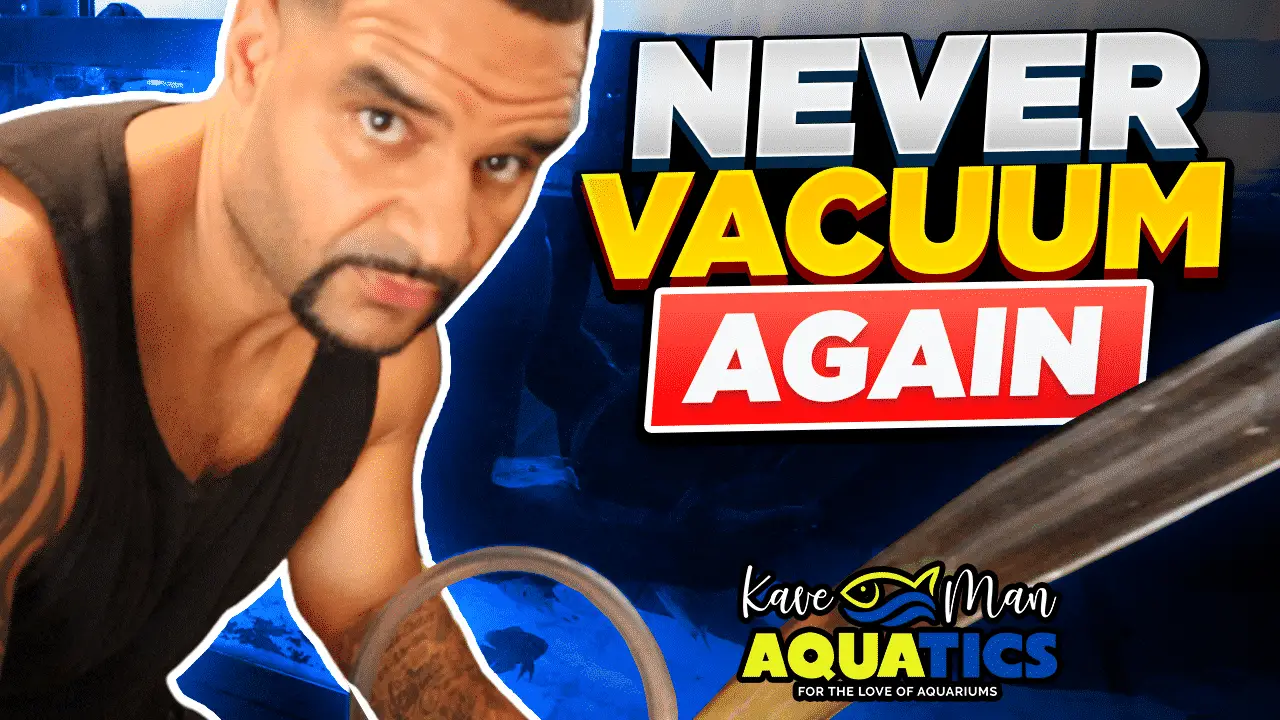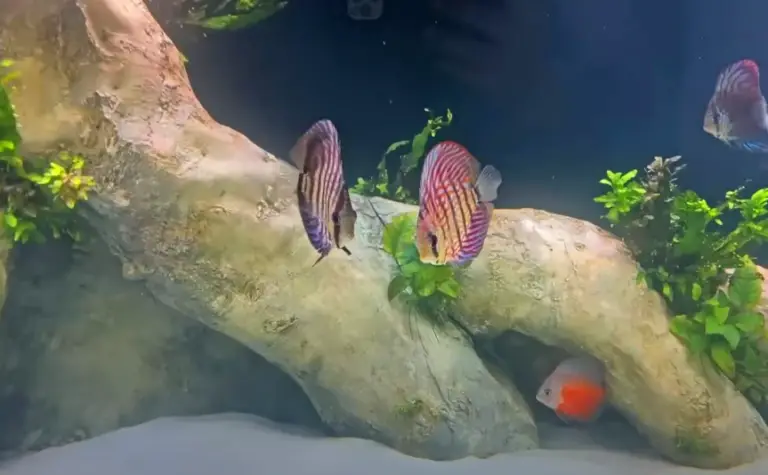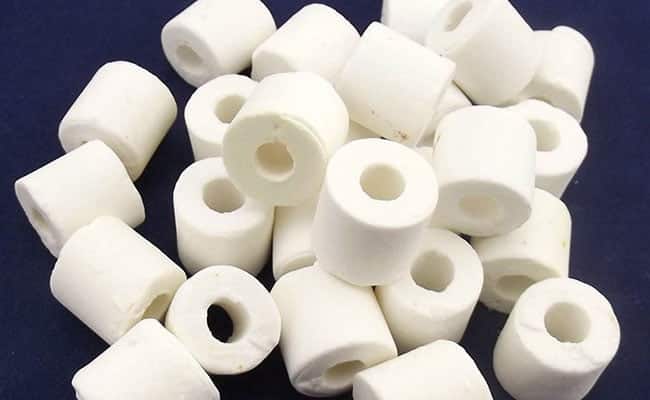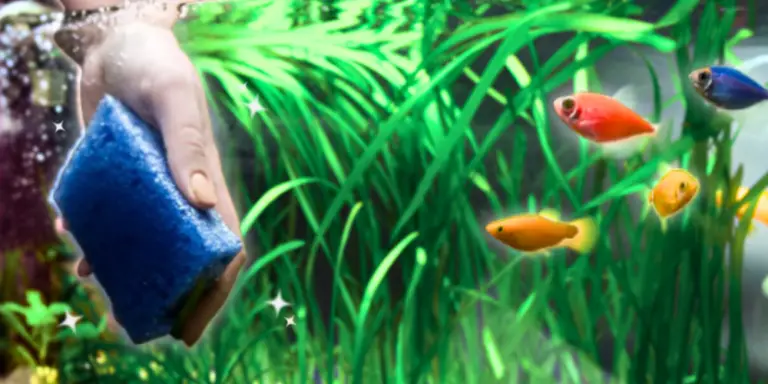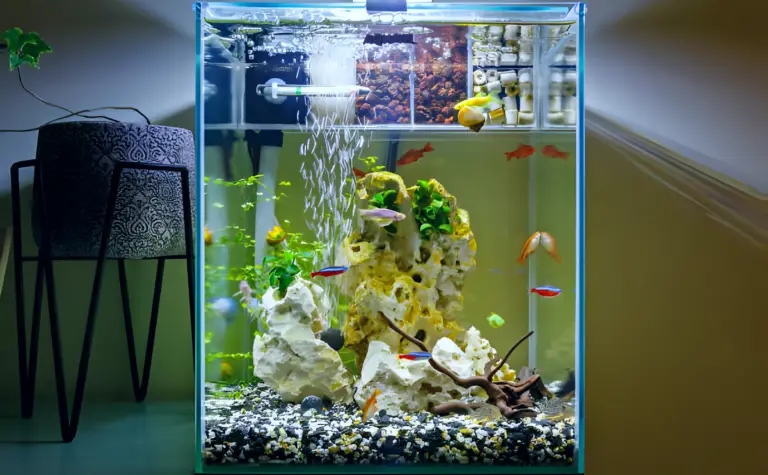Still Vacuuming? – Never Aquarium Substrate Vacuum Again! (Easy)
Aquarium substrate vacuuming is an essential part of your tank husbandry. We all understand that our fish create waste that can accumulate in our tanks and find a permanent hiding spot on our substrate or behind our décor if we don’t physically remove it ourselves.
Well, my fellow Aquarium hobbyist, this article is going to explain how you can avoid ever having to vacuum your substrate again!
Why do we Substrate Vacuum?
Fish poop is dirty! And it makes our tank look dirty too. But that’s just the optical reason why we substrate vacuum.
We also vacuum because we understand that allowing organic materials to remain in our tanks like fish waste, uneaten food, dead or decaying fish, or plant matter, can negatively alter our water parameters.
What happens if we don’t Substrate Vacuum?
These dissolved organics can and will cause ammonia spikes the longer they remain in the tank. Any presence of ammonia can kill our fish almost immediately. It’s the number 1 killer of new fish in a new tank. Something called New tank Syndrome.
Besides these ammonia spikes, the accumulation of detritus can also cause bacterial blooms. This is a milky white-looking cloud in your tank that nobody likes. The longer these organic materials stay in your tank the longer the bacterial bloom will last.
While a bacterial bloom is common in new tank setups due to the elevated organics from your source water in combination with the lack of beneficial bacteria to fight off the bloom. It is much less common in an established tank.
If this occurs in your cycled, mature, established tank vacuuming your substrate may be the first step in getting that bloom to subside.

Why I don’t Substrate Vacuum
Full disclosure, all my tanks use sand as a substrate, for multiple reasons. One of them is the topic of this article. My reasoning and methods for not having to vacuum my sand substrate do not apply to gravel substrates.
Mainly because dirt and debris will always get trapped in and under your gravel substrate. No way to avoid that. You will always have to continue vacuuming your gravel substrate on a regularly scheduled basis based on your tank’s bio-load, maintenance schedules, and other husbandry.
Sand on the other hand keeps MOST of all the detritus on the surface of the sand. I say most because some do find their way under it but it’s never enough to pose a serious problem if you have a good cleaning crew of fish that enjoy sifting and digging through the sand.
They will take care of whatever waste may find its way under your sand.
Now, It’s not that I choose to just “not vacuum”, that would be silly and dangerous. The reason why I don’t vacuum anymore is that I don’t have to. I don’t allow for the build-up of waste, uneaten food, or dead organic matter.
By not allowing it to build up in the first place, it eliminates the need for a vacuum!
How do I accomplish this? Great question…
How I Prevent build Up to Avoid a Substrate Vacuum

The simple answer is, a WaveMaker!
A wavemaker has multiple benefits, which you can read more about Here. One of them is the ability to keep your water moving constantly to create a circular pattern of flow in your tank.
Water movement is key in an aquarium for keeping things clean and providing good oxygen transfer. It’s also very helpful in eliminating any dead spots in your tank.
Dead spots are where poop, dirt, and other types of detritus accumulate. Which then causes the need for a substrate vacuum.
When a wavemaker is positioned correctly in your tank, along with the rest of your equipment like filter intakes and outputs, it helps in moving all the detritus, including any trapped detritus, for it to eventually find your filter intake.
Décor setup
Along with your wave maker positioned correctly it’s important to also have the right kind of décor setup, meaning as minimal décor as possible.
Heavily planted tanks or tanks with a lot of décors are going to create more dead spots where the flow and path of water will be obscured. It will be easier for detritus to find a dead spot between or under closely placed pieces of décor, making it harder for the flow of water to free it up into the water column.
A minimalistic aquascape will help in eliminating dead spots in the tank.
Let your filter do its job
This method helps your filter do its job more efficiently. Waste and detritus are supposed to go into your filter! It’s what it’s designed for. To catch and trap waste for it to be mineralized in the filter, not in your main tank area.
When detritus can’t find their way to your filter it can cause all the problems previously discussed. This is why we vacuum it out. With a wavemaker, it never piles up in the first place!
When we vacuum we’re essentially doing the filter’s job. Instead, let’s help the filter do its job. We have to create the best environment for the filter to work as efficiently as possible.
Results in my tank without substrate vacuuming
At the time of posting this article, my tank has gone over 4 months without a single vacuum. My water parameters have never spiked and my water stays crystal clear every day.
I keep up with my scheduled water changes and filter cleanings as usual, but vacuuming is a thing of the past!
Finding the sweet spot for all your equipment takes time. If things are not positioned correctly you may still get a build-up of waste which will cause you to still need to vacuum periodically.
Watch this video below on proper Wavemaker positioning for best results.

